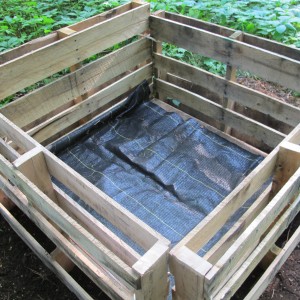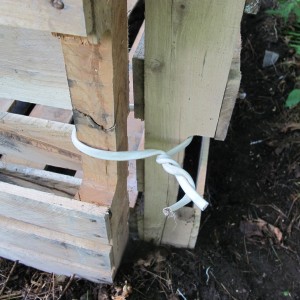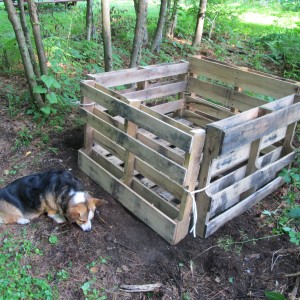Composting
Most of us have our own insecurities. We might be insecure about some aspect of our looks, or how we did in school, or perhaps about our athletic abilities. For gardeners, our compost piles are often a source of mild angst. We think we should be able to make compost that looks and smells like the black rich soil in just three months. Some go to great lengths: turning their compost piles and adding grass clippings or manure to get their compost piles to heat up. Yet most of us never have a “textbook perfect pile”. I say, “So what?” I buy it by the truckload as I can’t make enough with kitchen scraps – and it’s not convenient to dig it out from under a pile of freshly pulled weeds.
That being said, all of us should have a compost pile, or more than one. Compost piles keep food scraps out of the waste stream, and weeds eventually break down and turn to that magical dark compost. But I say 2 or 3 years is a reasonable time to let a pile slowly digest its contents. In fact, I recently harvested some black gold from a pile I had made and abandoned about 20 years ago. I used it as soil for a new planting of hostas, and they seem very pleased it.
I have a dog, Daphne, a corgi that is quite a rascal. She loves to eat anything, and will roll in almost anything – the stinkier the better. I always need to have a way to keep her out of the compost pile that I use for kitchen scraps, and recently built a new one using pallets I got for free. Wood pallets are generally available – everything these days is shipped on them.
I decided to make a compost bin with a low profile – Daffy is short and not much of a jumper. I used a reciprocating saw to cut the pallets down to a more manageable size – instead of building a bin that is 4 feet tall, I only needed one half that height.
I placed one full-sized pallet on the ground and arranged four shortened pallets around it. The bottom pallet keeps the pile from sitting in collected water or on soggy soil in rainy times. Compost does not want to be soggy. I connected the four sides using building wire – either 14-2 or 12-2 wire is fine, or nylon rope would work. I just twisted the wire around the vertical corner pieces. When done, I put landscape fabric on the bottom to keep material from falling through between the slats.
What will go in that new compost pile? I’ll toss in vegetable by-products like carrot tops and moldy broccoli. Old flower arrangements. Any organic matter that can break down with time: stale bread, tea bags, egg shells, and peanut shells and corn husks will go in mine. But no meat products, vegetable oil, dog poop or kitty litter – the latter two could carry diseases or parasites.
According to the experts, most of what goes in a compost pile should be carbon-based: brown leaves and dried grass or weeds, for example. A little nitrogen-rich material should also be added – things like fresh cut green grass, cow or chicken manure, fresh vegetable scraps. The ideal ratio is 30 parts brown matter to 1 part green matter. But our kitchen waste is generally high in green matter, low in brown matter, so it doesn’t break down as well as it should. In addition to the kitchen compost, I have separate piles for garden waste and these are easier to get “cooking” and breaking down the organic matter.
What can you do to improve the balance in your kitchen compost? Rake up some dry lawn clippings and put a layer in the compost bin before adding a bucket of kitchen scraps. Or if you have a leaf pile, occasionally add some to the bin. You could even buy a bale of hay to layer into your compost bin. You are trying to encourage microorganisms to break down the vegetable material, and they need lots of carbon and only a little nitrogen to build their little bodies and reproduce.
A compost pile needs oxygen in order to encourage aerobic bacteria, which are the good ones. Anaerobic bacteria thrive in a low-oxygen environment and are the ones that produce foul odors. The smell of rotten eggs, for example, can be produced in a compost pile that is wet and compacted and doesn’t have a good carbon-nitrogen ratio. If yours smells bad, fluff it up and layer in some hay or dry leaves.
There are plastic compost bins available and even rotating compost bins. Those are great for urban gardeners – they do a great job of keeping out skunks and raccoons. But they are relatively expensive and do not necessarily make compost any faster than the simple bin described above.
If you really want fast action, you’ll need to have multiple bins and turn the fermenting compost from one to another, adding carbon or nitrogen as needed. A compost pile that is working well heats up past 130 degrees, killing most seeds. But, as I said in my first book, you may need to quit your day job to tend a compost pile that works perfectly. I’d rather spend my time weeding – or goofing off.
Henry Homeyer will not be answering questions this week. His web site is www.Gardening-guy.com. He is the author of 4 gardening books.





